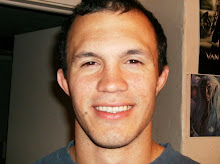Here is one of many blogs to follow, in which I will cover some basics in statistics and probability. I will post these in order to explain, piece by piece, the framework of my study, and eventual e-book. To most of us, it is common sense to keep our decks trimmed, because we know intuitively that doing so increases our chances of drawing into the cards we want to play. But without proof, our best guesses are nothing more than just that. Here is the proof, which can be found in the introductory chapter of most any Statistics text book:
IF: P(X) = 1/X
Prove: P(N) > P(N+1)
By substituting all instances of X for N when P(X) = 1/X, we get P(N) = 1/N.
By substituting all instances of X for (N+1) when P(X) =1/X, we get P(N+1) = 1/(N+1)
Let's arbitrarily call N 60, for a typical deck size of 60 cards.
We find that P(N) = P(60) = 1/60 = 0.01666,
and P(N+1) = P(60+1) = 1/(60+1) = 0.01639.
0.01666 > 0.01639, therefore
P(N) > P(N+1).
In otherwords, If you have one copy of a card in your deck, you will have a 1.666% chance of drawing into it from the top card of a 60 card deck, and a 1.639% chance of drawing into it from the top card of a 61 card deck. This might seem like an insignificant difference, but rest assured, as you add more and more cards to your deck, without thinning others out, the difference becomes significant. Later on I will cover finding Probability Without Replacement, which explains what happens to the probabilities of drawing into certain cards, as you deplete your library through the act of drawing. But for now chew on this; if you have 4 copies of a specific card in your deck, you have a 39.950% chance of drawing into at least one of those cards in your opening hand, from a 60 card deck. However if your deck is 70 cards, your chance of drawing into at least 1 of 4, in your opening hand, is reduced to 35.035%.
Sections
Wednesday, August 5, 2009
Subscribe to:
Post Comments (Atom)

No comments:
Post a Comment